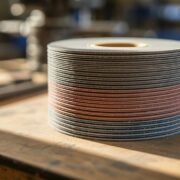In the medical industry, the quality and performance of CNC-machined components are paramount, and surface finishing is essential in ensuring better durability, functionality, and biocompatibility.
In this article, we will introduce twelve joint surface finishes used in CNC machining for the medical industry and how they ensure that medical parts meet the high standards required for safety and effectiveness in medical applications.
What is CNC Machining
CNC machining is a subtractive manufacturing process in which pre-programmed computer software controls the cutting tools’ movement. The cutting tools remove part of the workpiece to form the desired product.
CNC machining three to five axes cutting, high precision, and comprehensive material compatibility make it an essential part of the medical industry.
Why Surface Finishes Are Required For CNC Machined Medical Parts
Surface finishes are essential for CNC-machined medical parts because they improve their functions and aesthetics. Below is a summary of why they are crucial.
Enhancing Corrosion Resistance
CNC machined parts regularly come into contact with bodily fluids, disinfectants, and other corrosive substances. This can lead to corrosion. As a result, it is essential to protect the parts from corrosion resistance using processes such as anodizing and passivation.
Improving Biocompatibility
CNC-machined parts often have microscopic surfaces that can harbor bacteria and reduce biocompatibility. Surface finishes like electropolishing will smooth out these surfaces and reduce the risk of bacterial contamination. Some finishing options, such as electropolishing, make sterilizing the part easier.
Enhancing Aesthetic and Functional Properties
Although seldom significant, surface finishing processes such as bead blasting will improve the aesthetic value of the parts. Others, such as polishing, create a mirror-like surface, which makes them visually acceptable for medical professionals and patients.
Ensuring Dimensional Stability and Precision
Employing surface finishing processes such as grinding and honing can improve a CNC machined part’s dimensional stability, tolerance, and precision. As a result, the risk of malfunction due to dimensional inaccuracies decreases.
Reducing Friction and Wear
Surface finishing processes such as coating with PTFE (polytetrafluoroethylene) or applying lubricious coatings reduce friction and wear, prolonging the part’s longevity and making them easier to use.
Compliance with Regulatory Standards
Surface finishes can also be used to comply with regulatory standards like ISO 13485. These standards require medical devices to have surfaces free from contaminants, corrosion-resistant, and capable of withstanding repeated sterilization. As a result, you can meet the regulatory requirements with suitable surface finishes.
Common 12 Types of Surface Finishes for Steel CNC Machining
This section will introduce the twelve types of surface finishes for CNC Machining and their effect on the medical part.
Sand Blasting
Sand blasting involves propelling abrasive particles (sand) at high speed against the surface of steel parts to remove impurities and create a rough texture. The surface finish is appropriate for removing contaminants and preparing the part for further finishing.
Sand blasting is used in surgical instruments and orthopedic implants.
Pros:
- Effective at removing surface contaminants and creating a uniform texture.
- It is ideal for preparing surfaces for further finishing.
Cons:
- Introduces surface stress and potential micro-cracks.
- Requires thorough cleaning to remove residual abrasive particles.
Bead Blasting
Bead blasting uses delicate glass beads to smooth and clean the surface of steel parts, producing a uniform matte finish. It is suitable when a clean, matte finish is needed for aesthetics or functionality without altering the part’s dimension.
Bead blasting applies to implantable devices, dental tools, and other steel, stainless steel, aluminum, and titanium parts.
Pros:
- Produces a clean, aesthetically pleasing surface.
- Does not significantly alter dimensions.
Cons:
- Less effective on more challenging contaminants.
- It can dull sharp edges and delicate features.
Brushing
Brushing uses abrasive brushes to create a satin or brushed finish, removing minor imperfections. It is appropriate when a visually appealing, consistent finish and minor surface imperfections must be hidden.
Brushing applies to surgical trays and housings for medical devices made using steel, stainless steel, and aluminum.
Pros:
- Creates a visually appealing, consistent finish.
- It can hide minor scratches and imperfections.
Cons:
- Not suitable for parts requiring a high degree of smoothness.
- It can leave directional marks that may harbor contaminants.
Polishing
Polishing involves mechanically rubbing the surface with a polishing compound to create a high-gloss, mirror-like finish. It is suitable for getting a high-gloss and smooth surface, which reduces bacterial adhesion and enhances the part’s aesthetic appeal.
As a result, it is applicable in orthopedic implants, dental implants, and medical devices made using steel, stainless steel, aluminum, and titanium.
Pros:
- Reduces surface roughness
- Minimizes bacterial adhesion.
- Enhances aesthetic appeal.
Cons:
- Labor-intensive and time-consuming.
- Polished surfaces can be slippery, potentially affecting handling.
Passivation
Passivation uses an acid bath to remove free iron from the surface of stainless steel, enhancing its corrosion resistance. It is useful when improved corrosion resistance is needed to ensure stainless steel parts’ long-term durability and biocompatibility.
Passivation is suitable for surgical instruments, diagnostic equipment, and other stainless steel medical parts.
Pros:
- Increases resistance to rust and corrosion.
- Improves overall biocompatibility.
Cons:
- Requires careful handling and disposal of chemicals.
- It may not remove all surface contaminants.
Anodizing
Anodizing involves electrochemically treating the steel to form a thick, protective oxide layer. It is useful when a part needs enhanced corrosion resistance and surface hardness, particularly for parts made of aluminum or titanium.
Pros:
- Enhances corrosion resistance and surface hardness.
- You can add a variety of colors for coding purposes.
Cons:
- It’s less common for steel and more effective for aluminum.
- It can be expensive and complex to implement.
Plating
Plating involves coating the steel with a thin layer of another metal, such as nickel or chrome, via electroplating. It is appropriate when enhanced corrosion resistance, aesthetic appeal, or improved electrical conductivity are required.
Pros:
- Enhances corrosion resistance and aesthetic appeal.
- It can improve electrical conductivity for electronic components.
Cons:
- Plating can peel or wear off over time.
- It involves hazardous chemicals that require careful handling.
E-coating
E-coating, or electrophoretic coating, uses an electric current to deposit a paint-like coating onto the steel surface. It helps create a part with complex shapes requiring uniform coverage and excellent corrosion resistance.
Pros:
- Provides uniform coverage and excellent corrosion resistance.
- Environmentally friendly
- High efficiency.
Cons:
- Limited to parts that can be immersed in the coating bath.
- Requires a conductive substrate.
Electrolytic Polishing
Electrolytic polishing involves immersing the steel in an electrolyte solution and applying an electric current to smooth and brighten the surface. It is suitable for creating CNC-machined medical parts with smooth, clean, and corrosion-resistant surfaces. It also enhances biocompatibility and reduces bacterial adhesion.
Pros:
- Produces a very smooth, clean, and corrosion-resistant surface.
- Enhances biocompatibility by reducing bacterial adhesion.
Cons:
- Requires precise control of the process parameters.
- It can be costly due to the equipment and chemicals involved.
Carburization
Carburization involves heating the steel in a carbon-rich environment to increase surface hardness. It is suitable for parts that need increased surface hardness and wear resistance, such as surgical cutting tools.
Pros:
- Significantly increases surface hardness and wear resistance.
- Extends the lifespan of cutting and wear components.
Cons:
- It can cause distortion and requires additional heat treatment.
- Not suitable for all types of medical parts due to increased brittleness.
Nitriding
Nitriding introduces nitrogen into the steel surface at high temperatures to form a hard, wear-resistant layer. It is suitable for parts that need increased surface hardness and fatigue strength without significant distortion, such as orthopedic screws.
Pros:
- Increases surface hardness and fatigue strength without significant distortion.
- Provides excellent wear resistance and durability.
Cons:
- Requires precise temperature control and long processing times.
- It can be limited to certain types of steel.
Pickling
Pickling uses an acid solution to remove oxides and scale from the steel surface, improving its cleanliness and appearance. It is appropriate when removing surface contaminants and scales to enhance corrosion resistance and prepare the part for further processing in stainless steel surgical instruments and medical implants.
Pros:
- Effectively cleans and prepares surfaces for further finishing.
- Enhances corrosion resistance.
Cons:
- It involves handling hazardous acids and requires proper disposal.
- It can cause hydrogen embrittlement if not correctly managed.
Conclusion
Surface finishing is essential in ensuring that CNC-machined medical parts have better functionality, biocompatibility, and aesthetics. This article discussed twelve joint surface finishes used in CNC machining for the medical industry and when to use them.
Do Read: Is Sheet Metal Fabrication Good for the Medical Industry?













